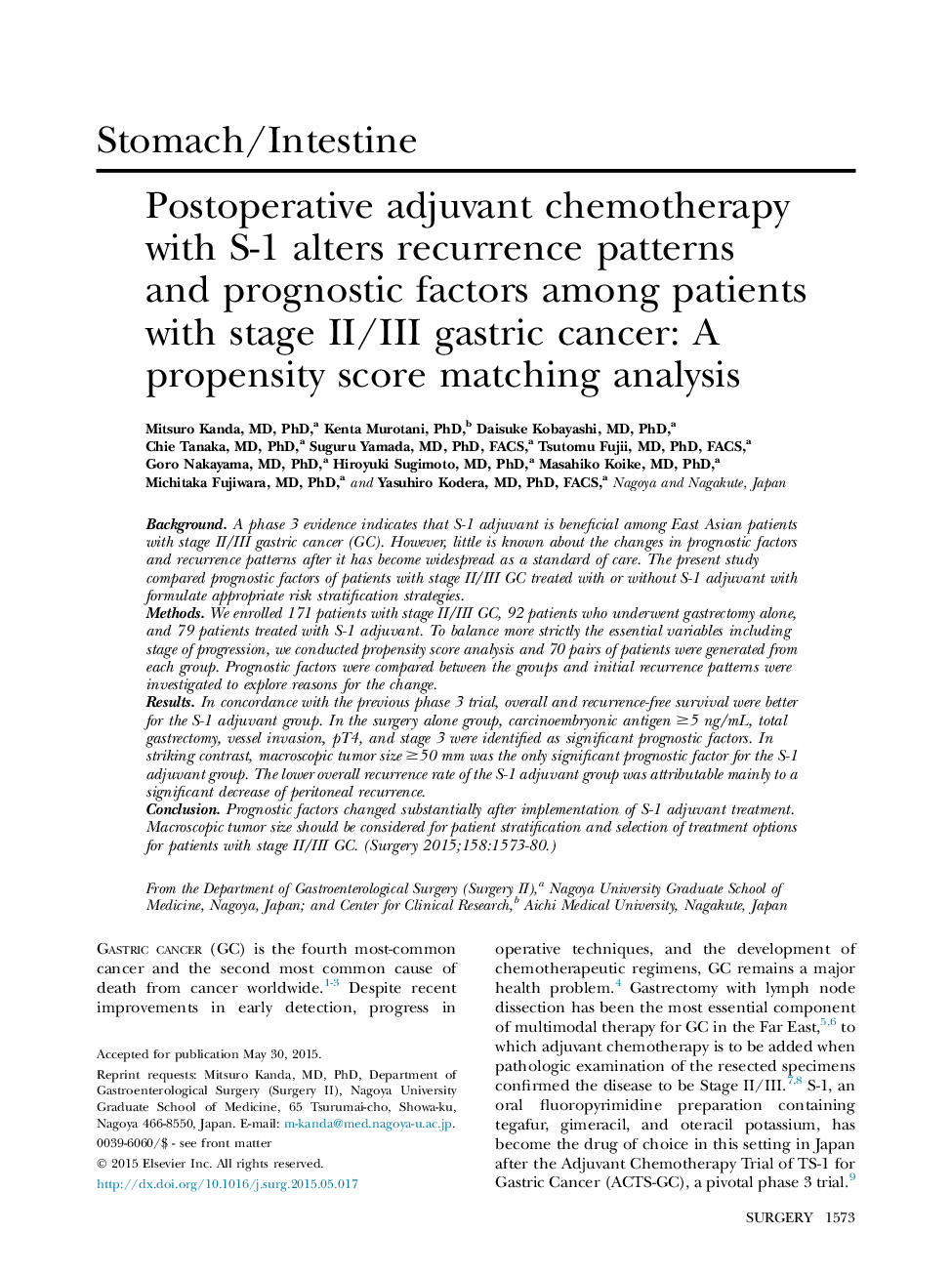| Article ID | Journal | Published Year | Pages | File Type |
|---|---|---|---|---|
| 4306412 | Surgery | 2015 | 8 Pages |
BackgroundA phase 3 evidence indicates that S-1 adjuvant is beneficial among East Asian patients with stage II/III gastric cancer (GC). However, little is known about the changes in prognostic factors and recurrence patterns after it has become widespread as a standard of care. The present study compared prognostic factors of patients with stage II/III GC treated with or without S-1 adjuvant with formulate appropriate risk stratification strategies.MethodsWe enrolled 171 patients with stage II/III GC, 92 patients who underwent gastrectomy alone, and 79 patients treated with S-1 adjuvant. To balance more strictly the essential variables including stage of progression, we conducted propensity score analysis and 70 pairs of patients were generated from each group. Prognostic factors were compared between the groups and initial recurrence patterns were investigated to explore reasons for the change.ResultsIn concordance with the previous phase 3 trial, overall and recurrence-free survival were better for the S-1 adjuvant group. In the surgery alone group, carcinoembryonic antigen ≥5 ng/mL, total gastrectomy, vessel invasion, pT4, and stage 3 were identified as significant prognostic factors. In striking contrast, macroscopic tumor size ≥50 mm was the only significant prognostic factor for the S-1 adjuvant group. The lower overall recurrence rate of the S-1 adjuvant group was attributable mainly to a significant decrease of peritoneal recurrence.ConclusionPrognostic factors changed substantially after implementation of S-1 adjuvant treatment. Macroscopic tumor size should be considered for patient stratification and selection of treatment options for patients with stage II/III GC.
